Recent adventures with pantry beans
cabrita
15 years ago
Related Stories
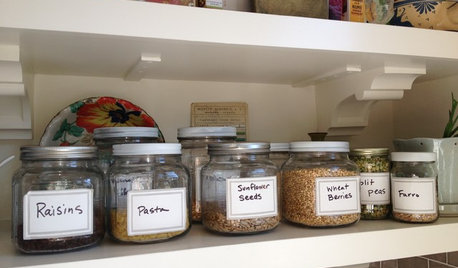
KITCHEN STORAGEArtful Organizers: Jars for Pretty Pantry Displays
Ditch the disheveled look of mismatched boxes and bags for colorful or clear pantry jars in an appealing arrangement
Full Story
GARDENING GUIDES10 Easy Edibles for First-Time Gardeners
Focus on these beginner-friendly vegetables, herbs, beans and salad greens to start a home farm with little fuss
Full Story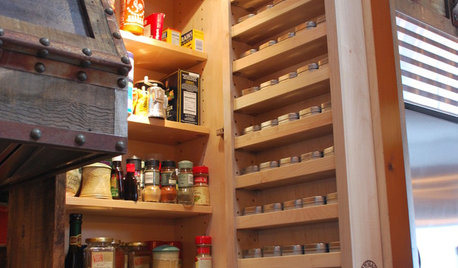
KITCHEN DESIGN7 Steps to Pantry Perfection
Learn from one homeowner’s plan to reorganize her pantry for real life
Full Story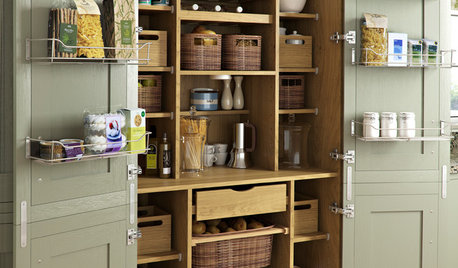
KITCHEN PANTRIES80 Pretty and Practical Kitchen Pantries
This collection of kitchen pantries covers a wide range of sizes, styles and budgets
Full Story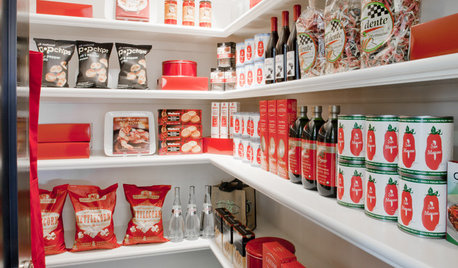
KITCHEN STORAGEGet It Done: How to Clean Out the Pantry
Crumbs, dust bunnies and old cocoa, beware — your pantry time is up
Full Story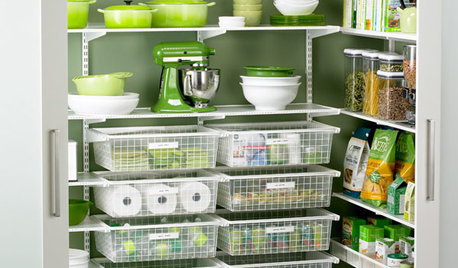
PRODUCT PICKSGuest Picks: 21 Nifty Pantry Organizers
Just say no to pantry chaos with these containers, racks, bins and other storage wonders
Full Story
KITCHEN DESIGNThe Best Places to Stash Small Kitchen Appliances
Tucked-away places like nooks, pantries and dedicated cabinets keep your kitchen gadgets handy but out of the way
Full Story
KITCHEN DESIGN6 Clever Kitchen Storage Ideas Anyone Can Use
No pantry, small kitchen, cabinet shortage ... whatever your storage or organizing dilemma, one of these ideas can help
Full Story
KITCHEN DESIGNKitchen of the Week: Great for the Chefs, Friendly to the Family
With a large island, a butler’s pantry, wine storage and more, this New York kitchen appeals to everyone in the house
Full Story
DECORATING GUIDESBrew a Café Look at Home
For a javalicious vibe without the long lines and table hoggers, just borrow from your favorite coffeehouse features
Full Story





happyday
jimster
Related Professionals
Arlington Landscape Architects & Landscape Designers · Lake Oswego Landscape Architects & Landscape Designers · Englewood Landscape Contractors · San Rafael Landscape Contractors · Silver Firs Landscape Contractors · Camp Springs Landscape Contractors · American Fork Decks, Patios & Outdoor Enclosures · Baltimore Decks, Patios & Outdoor Enclosures · Cary Decks, Patios & Outdoor Enclosures · Glasgow Decks, Patios & Outdoor Enclosures · Lockport Decks, Patios & Outdoor Enclosures · South Milwaukee Decks, Patios & Outdoor Enclosures · Southampton Decks, Patios & Outdoor Enclosures · Tomball Decks, Patios & Outdoor Enclosures · Waukesha Decks, Patios & Outdoor EnclosurescabritaOriginal Author
zeedman Zone 5 Wisconsin
happyday
cabritaOriginal Author
hemnancy
cabritaOriginal Author
jimster
cabritaOriginal Author
oldpea
cabritaOriginal Author
happyday
cabritaOriginal Author
happyday
sweet_lemon
cabritaOriginal Author
cabritaOriginal Author
farmerdilla
P POD